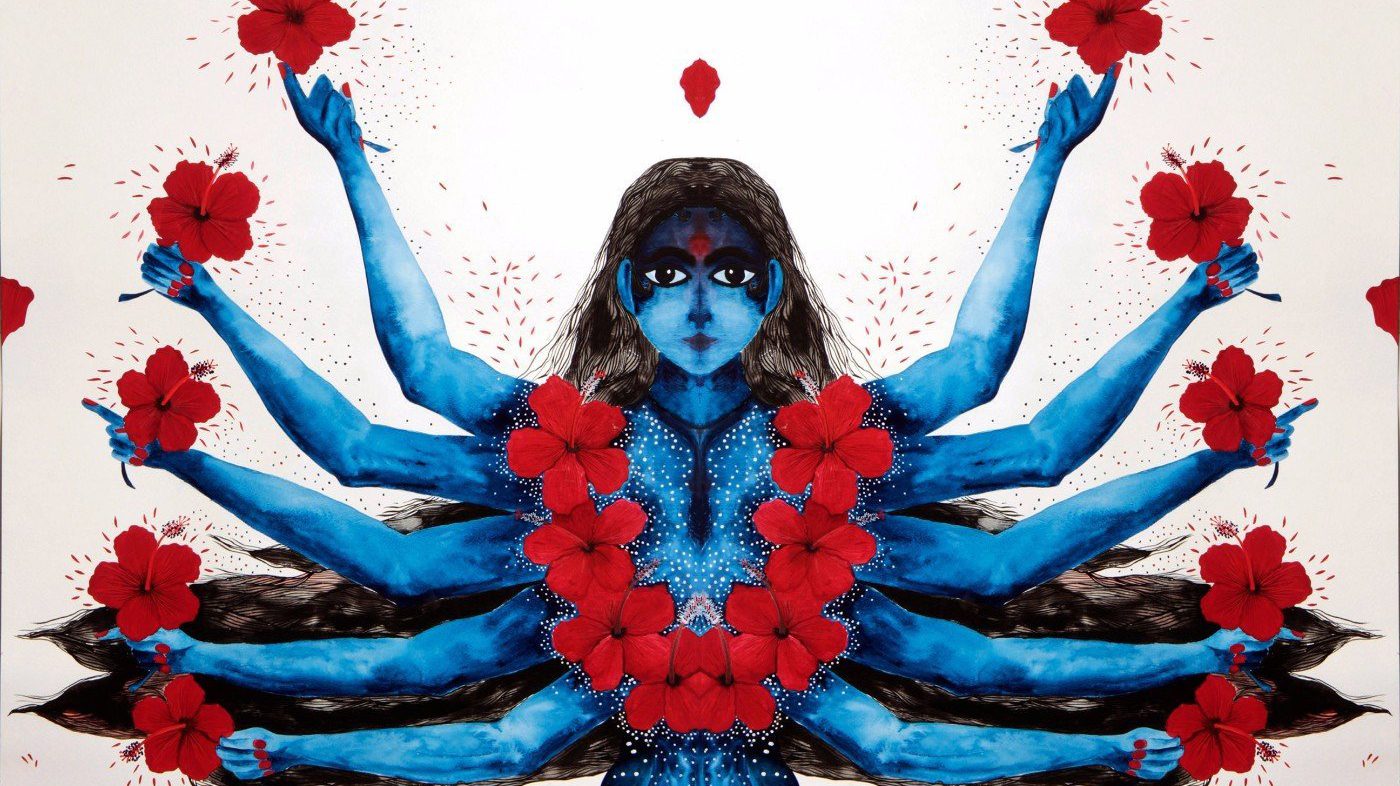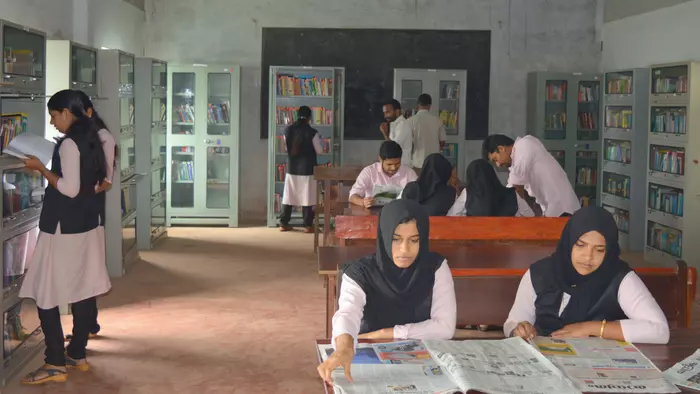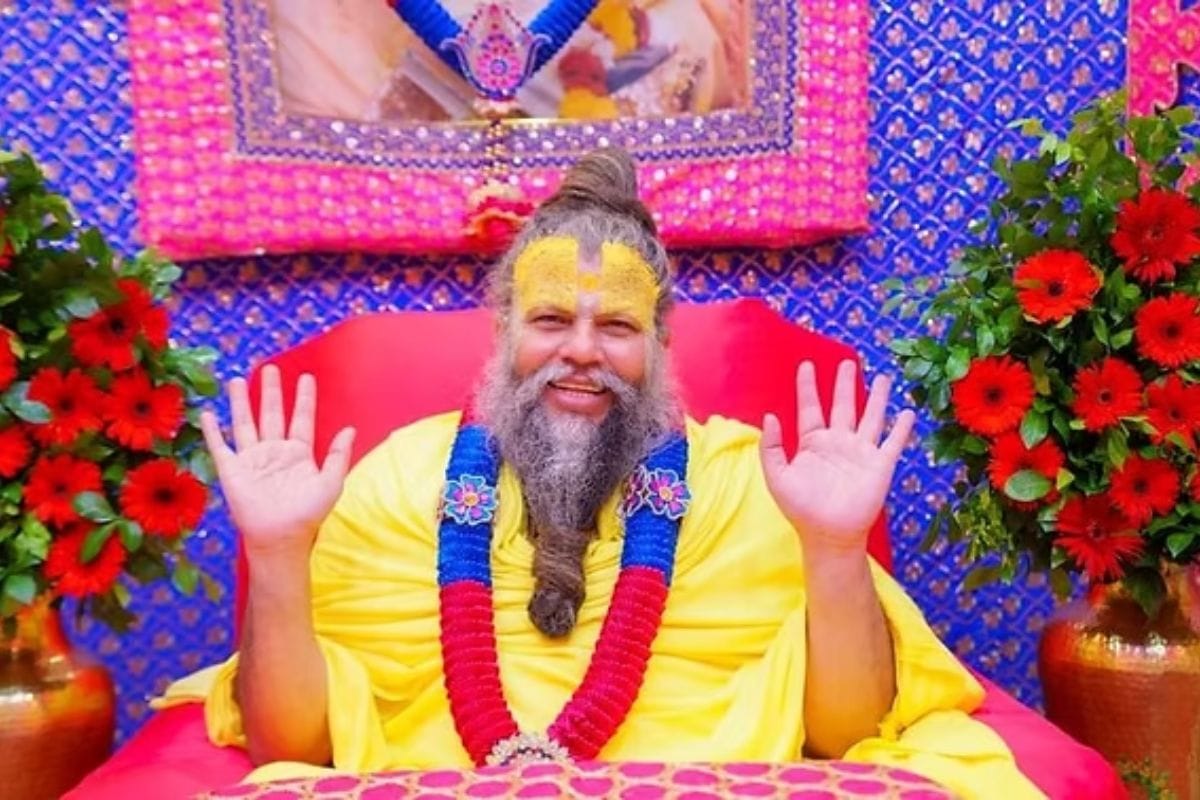Posted by Harshit Goyal
One of the stratagems of the patriarchy is to use religion to subjugate women. This use of mythology has been such commonplace that prominent feminists like Simone de Beauvoir and Kate Millett said that god is on the side of patriarchy. Not surprisingly, Hindu nationalists have deployed this trick with the best of their finesse.
Apart from using the trope of Sita and Savitri, the imagery of Kali is commonly invoked to define what constitutes a woman. But unlike other Goddesses, the liberal image of Kali allows these men to term their scheme as ‘Hindutva Feminism’, an oxymoron which is used to manipulate a lot of women. Through this post, I will endeavour to show how the trope of Kali is pernicious to women.

Takes away the agency
The most prominent use of Kali is to naturalise a belief that it is the Stri-Dharma of a woman to protect her husband. By demonizing the Muslims and showing them as a danger towards their husbands, Kali is being used to encourage women to participate in the Hindutva movements and organisations.
These women are now compelled to perform the tasks delegated to them along with the grunt work of home. They are never allowed to rise beyond a point and are completely subordinated under male leadership. (Note the difference between the nomenclature of Rashtriya Swayemsevak (Self Service) Sangh and Rashtriya Sevika (To Serve) Samiti) These male leaders determine the time when women can go home and the jobs that they can choose.
It is a standard trick of patriarchy, through which a meagre amount of freedom within the patriarchal structures is used to prevent them from having freedom outside of those structures. Once the participation of these women in the public sphere is increased through these movements, any demand for change in real issues is termed as an unnecessary transgression.
Further, while they are shown to be enjoying a free life in a public sphere, they are constantly taught that thinking about divorce leads to AIDS and that there cannot be anything like marital rape. Therefore, the trope of Kali ultimately leads to taking away the agency of a woman and makes her further subordinated to men.
Since religion is a very strong institution, the situation becomes really fatal when it comes in cahoots with another strong institution of patriarchy.
Leads to sexual subordination
To legitimise their rule, British vilified Indian culture as being “mystic” and “uncivilised”. An essential facet of this was lambasting Kali for being a Goddess with pent up sexuality. To them, Kali represented a dark native woman who is immodest and unchaste. This narrative was accepted by English-educated Hindu nationalists and since then, Kali is being used for legitimizing the belief that if a woman is not controlled, she is bound to go berserk. This dogma leads to two different consequences.
First, the duty of being a chaste woman is now stronger than ever. An ideal woman is represented as a hybrid figure of Kali, who has the qualities of Sita, Laksmi and Saraswati as well. Even though schools run by these organisations encourage them to be Kali in the form of veeranganas, the curriculum necessarily has chapters teaching them how to be chaste wives. These female propagandists, called pracharikas, have to necessarily advocate celibacy and dress in ‘non-provoking’ clothes. By imposing chastity in this manner, the Hindu nationalist leaders assure the men that their wives will remain ‘pure’ and that they should not restrict them from joining the movements.
An essential facet of this was lambasting Kali for being a Goddess with pent up sexuality. To them, Kali represented a dark native woman who is immodest and unchaste.
Another consequence of this belief regarding promiscuity of women is that it legitimises the sexual harassment of these women. In some villages of Kerala, where this belief regarding Kali is more prominent, men justify their eve-teasing by saying that since women have uncontrollable sexual desires, they themselves want to be teased and touched. Hence, the act of molestation became a right and a duty of men to ‘satisfy’ the needs of women.
Also read: Priyanka Paul’s Artwhoring Gives A New Avatar To Goddesses World Over
Prevents the formation of collective consciousness
Corollary to the representation of women as Kali is the demonization of Muslim men, who are shown to be the real cause behind their sexual subordination. Since these women have already internalised the subordination from Hindu men, they see this illusion as the real explanation of their distress. Even those women, who have never come across Muslims in their lives, support these movements because it gets them validation from the dominating men of their community and a sense of superiority over women who do not participate in these movements and over women of other communities.
This feeling of superiority in women who were hitherto subordinated makes them turn against other women. These movements make such women to support rape, molestation, maiming and killing of women and children of other communities. These women now play an active role in hiding the bodies of riot victims, preventing the arrest of Hindu zealots and in blocking the way of police from rescuing the Muslim women. Either they become completely blind to the oppression of women of other communities or they start seeing it as a divine punishment for following an ‘impure religion’. Hence, such a deployment of Kali’s image mitigates the chances of formation of collective consciousness within the women against the oppressive men.
The idea behind presenting women as Kali is to make them raise strong sons for Hindutva. This duty of raising a son is presented to be something which only a woman could do, as the men are believed to be ‘naturally’ incapable of doing so.
Imposes the motherliness trope
More often than not, the image of Kali which is used for comparison with women is the ‘mother Kali’. Such a comparison of women with Kali has the traditional concept of femininity at its centre, as per which the aggressive nature of women is presented as her protective nature towards her children. The idea behind presenting women as Kali is to make them raise strong sons for Hindutva. This duty of raising a son is presented to be something which only a woman could do, as the men are believed to be ‘naturally’ incapable of doing so. Hence, the juxtaposition of women and Kali leads to the imposition of a motherliness trope, which is a means of ossifying the gender norms and of controlling the sexuality of the women.
Also read: The Paradox Of Hindu Goddess Worship And Feminism
The four reasons given in this post show that apart from subordinating other communities, the fanatics of Hindutva are using the religion to subdue the women of their community also. Since religion is a very strong institution, the situation becomes really fatal when it comes in cahoots with another strong institution of patriarchy. Hence, there is a need to pose collective resistance to such baleful tropes.
Harshit is a law student in NLSIU, Bengaluru. Ever since he has been introduced to feminist consciousness, everything seems problematic. When he is not busy dancing to (sometimes problematic) mainstream Punjabi music, he is reading up on block-chains and smart contracts.
Featured Image Source: Tallenge Store
About the author(s)
Guest Writers are writers who occasionally write on FII.




